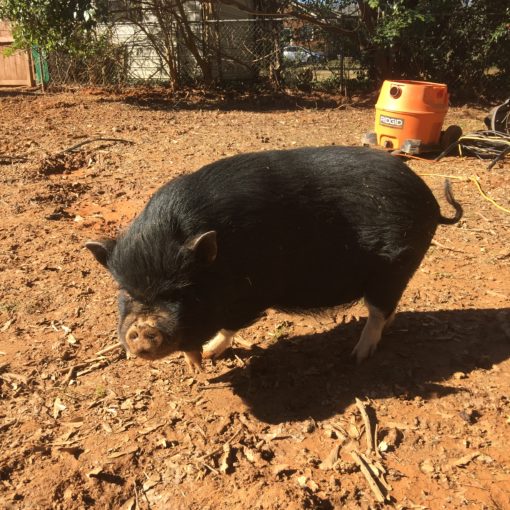By Helen Ravenel Hammond
Photos: Barbara Bergwerf
Everyone loves turtles, but taking that adoration to the next level is a group of diehard volunteers who are members of the Island Turtle Team. Mary Pringle, project leader of the group, explains that this is one of 30 groups formed all over the coast under the South Carolina Department of Natural Resources.
The Island Turtle Team looks out for sea turtles on the Isle of Palms and Sullivan’s Island. The 170 plus volunteers range in age from children to retirees and everything in between. They are all tied together by one thing: their love for the turtles. Only eight members are authorized to do hands-on work with the turtles, says Pringle, who is in her 20th year with the group. Currently, the group is at full capacity with a waiting list to join.
The official nesting season for the turtles started May 1 and will run through October 31. Barb Bergwerf, one of the core group members, explains that she and Pringle (both Isle of Palms residents) are doing work year-round with school groups and the public, educating them as best as possible.
Beach Patrol
About 20 hours a week, the women walk the beaches from 6:00 to 8:30 in the morning and at night from 8:00 to 10:30. Bergwerf shoots photographs, answers e-mails and updates the website www.bergwerfgraphics.com. As part of their roles, both ladies record their reports to the DNR Stranding Network. They are also two of three volunteers who have access to transport the live turtles to the turtle hospital, located in South Carolina Aquarium.
To date, loggerheads, green turtles, leatherbacks and Kemp’s Ridley sea turtle nests have been recorded on South Carolina beaches. By far, the most common nesting species is the loggerhead, which can weigh up to 300 pounds.
Pringle explains that they have gotten an early start this year; all but six nests had hatched at the time of this interview on August 30, and her goal then was to make sure they safely hatched before Hurricane Irma roared ashore. So far, there have been 50 total nests; eight on Sullivan’s Island and 42 on the Isle of Palms. “We have an 83-percent hatch rate success. We are happy that it is so good,” explains Pringle, adding that she feels they are truly making a difference. Before the 1980s and 1990s, the hatch rate was only 10 percent.
Turtle Teachers
The challenge for the duo is educating people on the sea turtles, which are endangered species. Lights shining on the beach can disorient them as they come ashore to lay their eggs and the hatchlings might travel inland towards artificial lights, where they can die from dehydration or become prey to other animals.
With tourists coming to town weekly, the rental companies educate visitors to keep the lights off from dusk until dawn. “People get excited,” she said.
Another important component is educating the public about their consumption on the beach. On the Isle of Palms there is an ordinance against using plastic bags; however, there are always straws and cigarette butts on the beach. “It can kill them because they are so bad for their digestive system,” warns Pringle.
Another problem is beachgoers digging giant holes on the beach. Not only are they a danger for people to fall into, they can also trap the turtles. The islands’ Fire and Police Departments are helpful in filling in the holes and will also help with loading the massive turtles up for rescues.
Bergwerf admits that not only is the work rewarding, but so is seeing how people react and care. “To see the look on a child’s face when he sees a hatchling feels so good. We have heard from people that it has been a life-changing experience for them. One girl decided to become a biology major.”
Bergwerf adds that years later, these children still recall what they learned: Don’t dig holes, turn out the light and remember the turtles. “We love the sea turtles, there is something charismatic about them,” says Pringle.
PROTECTING THE TURTLE
Biologists urge the public to assist with sea turtle conservation by reporting all dead or injured sea turtles to 1-800-922-5431. Additionally, the following tips are useful:
- Never disturb a sea turtle crawling to or from the ocean.
- Once a sea turtle has begun nesting, observe her only from a distance.
- Do not shine lights on a sea turtle or take flash photography.
- Turn out all lights visible from the beach, dusk to dawn, from May
through October.
- Close blinds and drapes on windows that face the beach or ocean.
- Fill in holes on the beach at the end of each day as adults and hatchlings can become trapped.
- Do not leave beach chairs, tents etc. on the beach overnight.
- Never attempt to ride a sea turtle.





